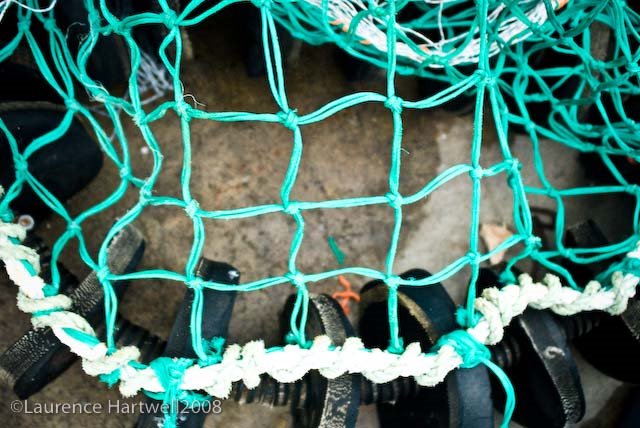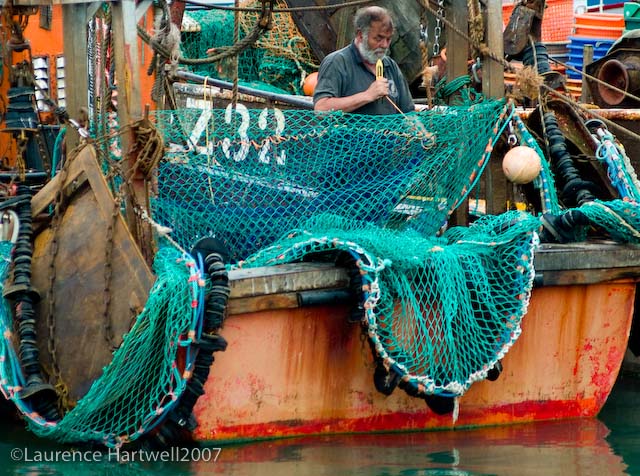Bottom trawling — the fishing method of dragging open nets along the ocean floor — has been widely criticized for its potential to damage sensitive marine habitat structures. That damage may be negligible off most parts of the California coast, according to a recent study conducted by ocean scientists and published in Fishery Bulletin.
Researchers from California State University Monterey Bay, The Nature Conservancy and Pomona College found that California’s largely soft-bottom sea floor saw negligible lasting impacts from small-footrope trawling equipment.
“Surprisingly to us, we found pretty negligible effects to the sea floor and to fish habitat in these soft-bottom sediments on the continental shelf,” said Mary Gleason, lead scientist for the Nature Conservancy’s California Oceans Program.
During the three-year study, fishermen were asked to trawl patches of the ocean floor off of Morro Bay in Central California. The areas that were trawled were analyzed by underwater photos and video and compared with adjacent areas that had been left untouched.
The researchers found that, while some scour marks remained in the test patches more than a year after trawling, photos showed some smoothing was occurring.
They also found no significant differences between trawled and control plots with regards to invertebrate species.
The scientists concluded that the negligible impacts were due to the fact that California’s continental shelf mostly comprises sand and mud and not rocky coral that takes great lengths of time to form.
“Trawling in rocky areas, with long-lived corals is going to be much more damaging and have a bigger, longer lasting impact than trawling in soft bottom habitats made up of mud and sand,” Gleason said.
Gleason said that the results may provide support for changing how California’s coast is fished. Most of California’s state waters are closed to bottom trawling.
“I think one of the main messages is that bottom trawling impacts are very context dependent. It depends on the types of gear you’re using, the types of habitats being trawled and how often trawling occurs,” Gleason said.
Bottom trawling is the most effective method for catching certain types of flatfish, including species of cod and sole.
“Rather than just sort of banning trawling everywhere, we need to acknowledge that trawling is the only way to catch a lot of important seafood,” Gleason said.
Though bottom trawling can be a polarizing topic within ocean conservation circles, some environmental groups praised the study for increasing understanding of trawling’s impacts.
“It really is an advance, because that level of study and scientific rigor hadn’t been done before,” said Geoff Shester, California campaign director for Oceana. “We hope to see that be replicated in more habitats so we don’t just learn about the impacts in the place they studied, but how can we apply this in other types of areas as well.”
Shester said that the collaboration with commercial fisherman on the study and other shows projects shows the potential for responsible fishing in the future.
“By getting better science and working together, we’ve actually been able to find win-wins where we actually increase fishing opportunities while also simultaneously increasing the overall protection to sensitive marine habitats up and down the West Coast,” Shester said
http://www.scpr.org/news/2015/02/17/49867/bottom-trawling-not-as-bad-for-california-sea-life/
Welcome to Through the Gaps, the UK fishing industry's most comprehensive information and image resource. Newlyn is England's largest fish market and where over 50 species are regularly landed from handline, trawl, net, ring net and pot vessels including #MSC Certified #Hake, #Cornish Sardine, handlined bass, pollack and mackerel. Art work, graphics and digital fishing industry images available from stock or on commission.

